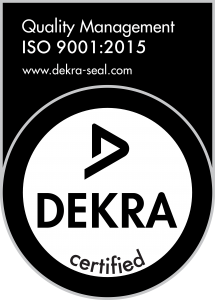860-829-2244
Boyce Headley
@boyceheadley
Profile
Registered: 5 months, 3 weeks ago
Integrating Data Aggregation Services into Your Current Workflow
In a enterprise landscape pushed by data, the ability to collect, process, and analyze information from a number of sources efficiently is crucial. Data aggregation services provide a powerful way to centralize information, reduce manual work, and boost determination-making speed. When integrated properly into an existing workflow, these services can significantly enhance productivity, accuracy, and strategic insight.
What Are Data Aggregation Services?
Data aggregation services automatically collect information from varied sources—such as websites, databases, APIs, and IoT units—and consolidate it right into a unified format. This can embody everything from sales figures and buyer behavior to market trends and competitor activity. Instead of spending hours gathering data manually, teams can access real-time, structured data streams ready for analysis.
Why Integration Issues
Merely utilizing a data aggregation service isn’t enough. The real value emerges when these services are deeply embedded into your current workflow. This means integrating data aggregation with your business systems—such as CRM platforms, BI tools, project management apps, and analytics dashboards. Executed proper, this alignment enables real-time updates, automated alerts, and faster reporting, all without interrupting established processes.
Key Benefits of Workflow Integration
Time Savings
Integrating data aggregation eliminates the need to switch between platforms to collect and examine data. This reduces friction and allows your team to spend more time on analysis and strategy instead of manual data collection.
Improved Accuracy
Manual data dealing with increases the risk of human error. Automated aggregation reduces inconsistencies and ensures that everybody is working from the same dataset.
Real-Time Insights
Integration makes it potential to drag live data directly into your analytics platforms. This is particularly valuable for monitoring KPIs, tracking customer interactions, or responding to market changes instantly.
Enhanced Collaboration
When all departments have access to the same unified data, collaboration becomes more efficient. Marketing, sales, and operations can align their strategies based on shared, constant information.
Scalability
As your online business grows, the amount of data increases. Integrated aggregation services can scale with your operations, guaranteeing that your systems proceed to deliver insights efficiently.
Steps to Integrate Data Aggregation Services
Audit Your Current Workflow
Start by mapping out your current data processes. Determine the place information is collected, how it’s processed, and where it’s being used. This helps pinpoint opportunities for integration.
Select the Proper Aggregation Tool
Not all services are constructed the same. Look for platforms that offer strong API assist, compatibility with your current tools, and customization options that suit your trade needs.
Set up Clear Objectives
Define what you want the mixing to achieve—whether or not it’s reducing report creation time, enhancing buyer insight, or improving forecasting accuracy.
Work with IT or a Data Specialist
Integration often requires technical experience, especially when dealing with legacy systems. Collaborating with your IT department or a data integration specialist can guarantee a smooth and secure implementation.
Test and Iterate
Start with a pilot program before rolling out the integration across your entire organization. Use feedback to fine-tune the process and address any bottlenecks.
Common Use Cases
E-commerce: Aggregating sales data, stock updates, and customer conduct right into a single dashboard to streamline operations.
Finance: Pulling monetary market data from numerous sources to create dynamic investment models.
Healthcare: Combining patient data, diagnostics, and treatment outcomes into centralized EMR systems for better clinical decisions.
Marketing: Integrating campaign performance data across platforms like Google Ads, Facebook, and e mail automation tools for unified ROI tracking.
Final Tip
When integrating data aggregation services, the key is seamless alignment—not disruption. The most effective options are the ones that work within the background, enhancing your workflow without adding complicatedity.
If you have any questions regarding where by and how to use Business Data Aggregation, you can get in touch with us at our web-page.
Website: https://datamam.com/data-aggregation-services/
Forums
Topics Started: 0
Replies Created: 0
Forum Role: Participant

